One of the major components of a wireless Access Point is the antenna. These radio components come with different shapes and sizes to fit specific deployment needs, and each access point can bundle multiple antennas for sending and receiving signals in order to benefit from the MIMO (Multiple Input/Multiple Output) technology and obtain higher throughput and signal resilience, also the arrangement of multiple antennas internally to a single WLAN access point can be used to influence the shape and behavior of the wireless signal (both on transmit and receive). To better understand how each GWN access point model broadcasts wireless signal, this paper provides radiation patterns to help engineers during the deployment process.
The GWN7605LR Outdoor Long-Range Wi-Fi Access offers extended coverage range support for both indoor and outdoor deployments thanks to its innovative antenna and weatherproof design. The GWN7605LR comes equipped with dual-band 2×2:2 MU-MIMO technology and a sophisticated antenna design for extended coverage range of up to 250 meters. It uses a controller-less distributed network management architecture in which the controller is embedded within the product’s Web user interface for easy administration of locally deployed Wi-Fi APs. The GWN7605LR is also supported by GWN.Cloud and GWN Manager, Grandstream’s cloud and on-premise Wi-Fi management platform. Powered by marketleading technology for advanced QoS, fast roaming, mesh networks, captive portals, support for 100+ concurrent clients and dual Gigabit network ports, the GWN7605LR is an ideal Wi-Fi access point for lowlatency jitter-sensitive real-time applications (such as voice/video-over-Wi-Fi devices & applications) in lowto-medium user density scenarios.
We begin this report with a glossary of basic definitions related to antennas radio characteristics and then progress through the specific radiation patterns for GWN7605LR access point series.
TERMINOLOGY
On this first part, we will provide quick brief review of some fundamental concepts related to antennas and radio propagation:
Antenna: An antenna is a transducer between a feed signal and radiated wave over the space, it is usually attached to a transmitter/receiver unit and the radiated energy is characterized by the antenna’s radiation pattern.
Antenna pattern: The radiation pattern or antenna pattern is the graphical representation of the radiation properties of the antenna and how it radiates energy out into space or how it receives energy (reciprocity). An antenna radiates energy in all directions, at least to some extent, so the antenna pattern is actually three-dimensional. It is common, however, to describe this 3D pattern with planar patterns, called the principal plane patterns. These principal plane plots are commonly referred to as the antenna radiation patterns.

Isotropic radiator: An isotropic radiator is a hypothetical lossless antenna that radiates its energy equally in all directions. This imaginary antenna would have a spherical radiation pattern and the principal plane cuts would both be circles since any plane cut through a sphere would be a circle.
Gain: The gain of an antenna (in a given direction) is defined as the ratio of the power gain in that direction to the power gain of a reference antenna in the same direction, usually an isotropic radiator is set as reference and the value of the gain is expressed in dBi. It is important to state that an antenna with gain doesn’t generate power and it does simply direct the way the radiated power is distributed relative to radiating the power equally in all directions, thus the gain is just a characterization of the way the power is radiated.
Efficiency: The efficiency of an antenna is a ratio of the power delivered to the antenna relative to the power radiated from the antenna. A high efficiency antenna has most of the power present at the antenna’s input radiated away. A low efficiency antenna has most of the power absorbed as losses within the antenna, or reflected away due to impedance mismatch What causes an antenna to not have an efficiency of 100%.
Antenna efficiency losses are typically due to:
- Conduction losses (due to finite conductivity of the metal that forms the antenna).
- Dielectric losses (due to conductivity of a dielectric material near an antenna).
- Impedance mismatch loss.
TEST ENVIRONMENT
This test report gives schematic diagrams with antennas distribution of GWN76XX access points series, along with the antenna radiation patterns both 2.4Ghz and 5Ghz frequencies in order to help engineers during deployment process.
Please note that these radiation patterns are gathered in a fully anechoic environment. Their shape will change in installed environments depending on the obstacles that the wireless signal might face. Every deployment will behave differently due to materials, geometries of structures, etc and how these materials behave at 2.4GHz and 5GHz.
Below figure gives an overview of the used test environment:
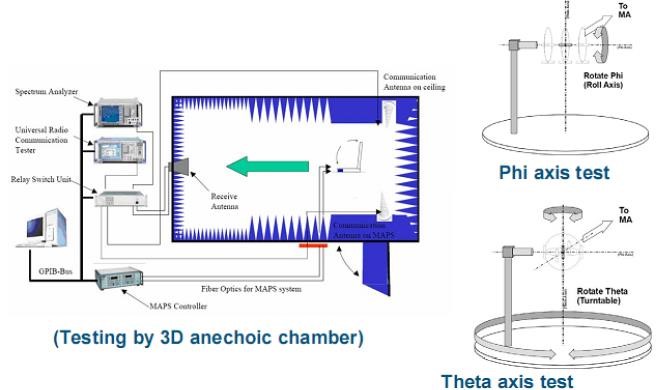
GWN7605LR ANTENNA CHARACTERISTICS
Antenna Patterns
On this section, we provide the resulting antenna radiation patterns for GWN7605LR access point from the conducted test, the pattern plots provided are for elevation (vertical) plane and azimuth (horizontal) plane as well as the 3D mapped model.
| LABEL | 2.4G | 5G |
| Elevation – 0º | 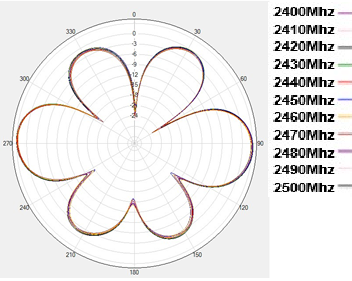 | 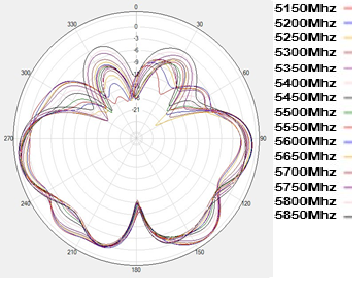 |
| Elevation – 90º | 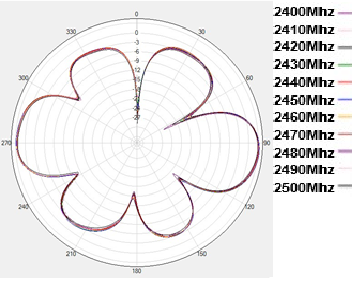 |  |
| Azimuth |  | 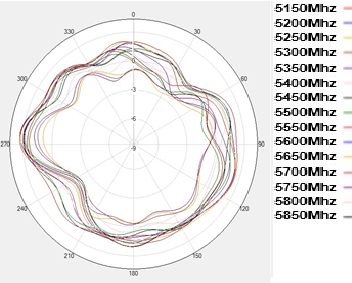 |
| 3D model | 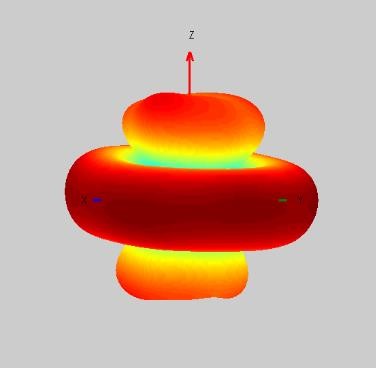 | 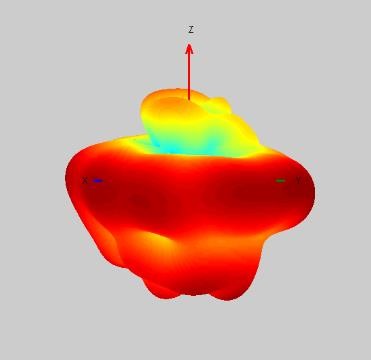 |